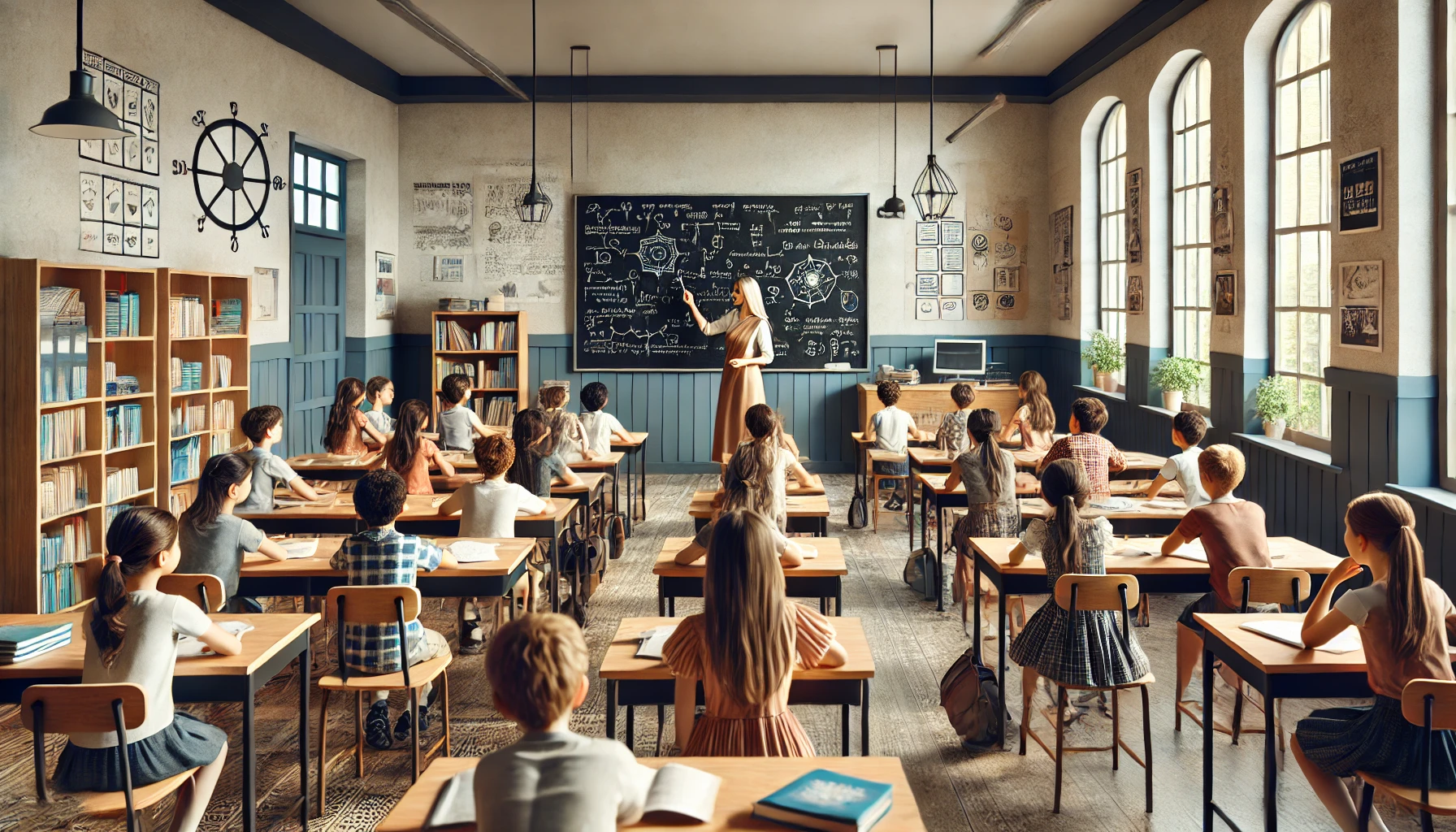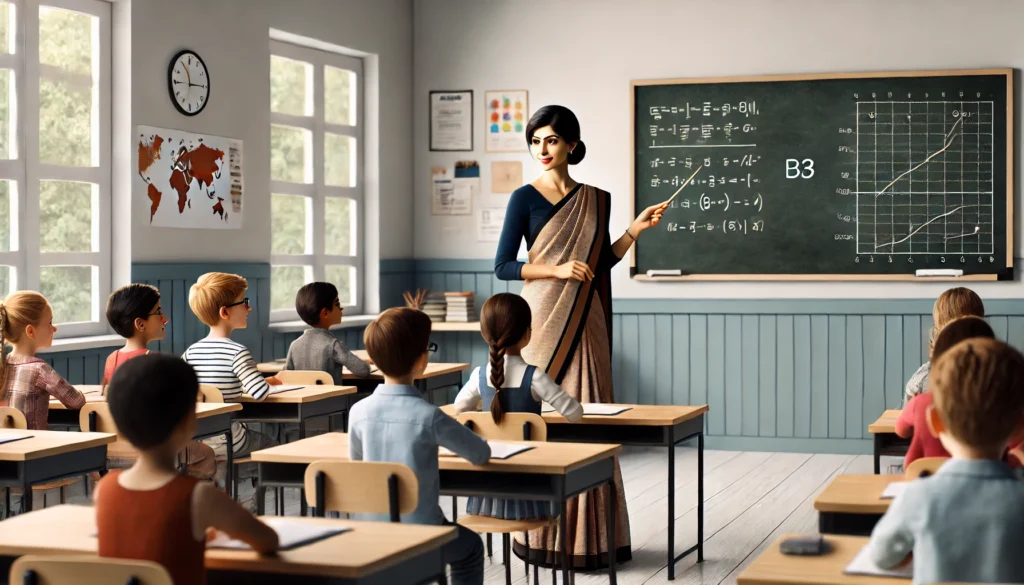SenseXR AR-VR Controller For Smartphone Buy Now
THE PROBLEM WITH TODAY’S SCHOOL EDUCATION


Today’s school education system, while essential, faces several challenges that limit its effectiveness in preparing students for the future. Some of the most pressing problems include:
1. Rote Learning Over Critical Thinking
Many educational systems still emphasize rote memorization over critical thinking, creativity, and problem-solving. Students are often expected to memorize information for exams rather than understanding concepts deeply or applying knowledge in real-world scenarios. This results in a lack of analytical thinking, which is crucial in today’s fast-evolving world.
2. Outdated Curriculum in Current School Education System
In many places, school curriculums have not evolved to match the rapidly changing job market and technological advancements. Students often learn outdated information, leaving them unprepared for the challenges of modern industries such as AI, data science, or sustainability. Important subjects like financial literacy, digital skills, mental health, and emotional intelligence are often overlooked.
3. One-Size-Fits-All Approach
The traditional education system tends to follow a standardized, one-size-fits-all approach, which does not cater to individual learning styles and paces. Students with different abilities and interests are often forced into the same learning tracks, leading to disengagement and frustration for those who need a more personalized approach.
4. Lack of Practical Application
Schools often focus on theoretical knowledge, but many students leave without understanding how to apply what they’ve learned in real-life situations. Hands-on learning, practical experiences, and problem-based learning opportunities are limited. This leaves students unprepared to tackle real-world challenges or make informed decisions about their future careers.
5. Excessive Focus on Exams and Grades
The current education system places an overwhelming emphasis on standardized testing and grades. This leads to stress and anxiety among students, stifling creativity and reducing their overall motivation to learn. The focus shifts from gaining knowledge to simply scoring well on exams, neglecting holistic development.
6. Teacher-Centric Learning
In many schools, the learning process is still teacher-centric, with limited student interaction. This passive learning approach prevents students from being active participants in their education. Student engagement, collaboration, and independent learning are often sacrificed in favor of lectures and top-down teaching methods.
7. Neglect of Soft Skills
Critical soft skills like communication, teamwork, emotional intelligence, and adaptability are often neglected in school curriculums. These skills are vital for success in the workplace and personal life but are not given the same importance as academic subjects. As a result, students may struggle to navigate complex interpersonal or professional situations.
8. Lack of Focus on Mental Health
Mental health is a significant concern for students today, yet most schools do not provide adequate mental health education, counseling, or support. The pressure to succeed academically, combined with personal challenges, can lead to burnout, anxiety, and depression. Schools often lack trained counselors or mental health resources to help students cope with these pressures.
9. Inequality in Education
Access to quality education remains unequal, particularly in developing countries or underserved areas. Socioeconomic status, geographic location, and lack of resources contribute to disparities in education quality. Students from disadvantaged backgrounds may not have access to well-trained teachers, learning materials, or technology, further widening the gap between them and their peers.
10. Overcrowded Classrooms
In many schools, overcrowded classrooms limit individualized attention and personalized teaching. Teachers struggle to manage large groups, making it difficult to address the needs of each student. This lack of interaction hampers the learning experience, as some students may fall behind without the necessary support.
11. Resistance to Technology Adoption
While the world is becoming increasingly digital, many schools still rely on traditional methods and are slow to adopt new technologies. This creates a disconnect between students’ daily lives, where technology plays a central role, and the classroom, where they are not taught how to use it effectively. Resistance to adopting tools like virtual learning, online resources, and educational apps has become a barrier to modern education.
12. Limited Career Guidance
Many school systems do not provide adequate career guidance or exposure to different career paths. Students often complete their education without a clear understanding of what they want to pursue or how to achieve their goals. There’s little emphasis on career exploration, internships, or skill-building for future job markets, leaving students uncertain about their future.
13. Ineffective Teacher Training
Teachers are one of the most crucial components of a successful education system, but many teachers are not given sufficient training or professional development. Traditional teaching methods are often overemphasized, and there’s limited focus on fostering creativity, emotional intelligence, or technological literacy in students. As a result, teachers may struggle to engage students or adapt to the changing educational environment.
14. Focus on Academic Excellence Over Holistic Development
Schools often focus on academic success at the expense of holistic development. Arts, physical education, and extracurricular activities are often sidelined, despite their importance in fostering creativity, mental well-being, and social skills. This creates an imbalance, where students may excel academically but lack emotional, social, or creative growth.
15. Lack of Real-World Skills
Schools often fail to teach essential life skills like financial literacy, basic household management, digital safety, and problem-solving in everyday life. Students leave school without a clear understanding of how to navigate the adult world, manage their finances, or solve practical problems.
Conclusion:
The current education system needs to evolve to meet the demands of the modern world. A shift towards more personalized, practical, and future-oriented education is crucial to ensure that students are not only academically successful but also well-rounded, adaptable individuals capable of thriving in an ever-changing world. By addressing these issues, we can create a more inclusive, engaging, and relevant educational experience for students.
Related Articles: Read More